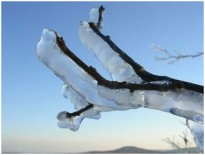Make Every Day Earth Day
The first Earth Day was held in 1970 as a grass-roots  effort to challenge the environmental politics of the time. It has since blossomed into a day of awareness and celebration of all the ways that we can – and do – give back to the earth.
effort to challenge the environmental politics of the time. It has since blossomed into a day of awareness and celebration of all the ways that we can – and do – give back to the earth.
- If your shower fills a one-gallon bucket in less than 20 seconds, replace the showerhead with a water-efficient model.
- Put food coloring in your toilet tank. If it seeps into the toilet bowl without flushing, you have a leak. Fixing it can save up to 1,000 gallons a month.
- Turn off the water while brushing your teeth and save 25 gallons a month
- Catch water in an empty container to measure sprinkler output. One inch of water on one square foot of grass equals two-thirds of a gallon of water.
- Monitor your water bill for unusually high use. Your bill and water meter are tools that can help you discover leaks.
- Try installing a timer on your indoor and outdoor lights.
- Unplug your appliances when you aren’t using them. The plugs are still drawing energy even when the item it powers is not in use.
- Consider solar chargers for items like smartphones and tablets. We DO get enough sun in Oregon to power your phone, we promise.
- Recycle your old batteries. Safe disposal of old batteries will help prevent soil and water pollution.
- Compost your waste. There are so many things you can compost.
“Remember there’s no such thing as a small act of kindness. Every act creates a ripple with no logical end.” ~ Scott Adams How To: Keep Your Pipes From Freezing And What To Do If Disaster Strikes
Frozen pipes are always a risk when temperatures skid to the freezing-and-below mark. Here are a few tips on how to keep your pipes from freezing, and what to do if disaster strikes:
- Let your faucets drip overnight, particularly un-insulated pipes located on an exterior wall. Lukewarm water is your best bet.
- Keep cabinet doors to those areas open to allow the heat from your house to circulate around pipes near exterior walls.
- Keep your thermostat set to the same temperature both day and night. Experts recommend setting it no lower than 68 degrees Fahrenheit 20 Celsius.
- Know where your main valve and water heater valves are, just in case.
Monitoring your pipes
- The first sign of freezing is reduced water flow from a faucet. Check the flow before you go to bed and when you wake up.
- Check your pipes around unheated areas, exterior walls, and crawl spaces. They tend to be the most vulnerable.
- Check for drafts and caulk areas near pipes where you feel cold air coming in.
If your pipe freezes
- Inside, a hair dryer can do a great job of warming up the pipe. Just make sure you’re not standing in water!
- Heat water on your stove and soak towels in the hot water, then wrap your frozen pipe in the towels. Start with the portion of the pipe nearest the faucet.
If your pipe bursts
- Turn off your water at the main valve.
Don’t let this happen to your water pipes











